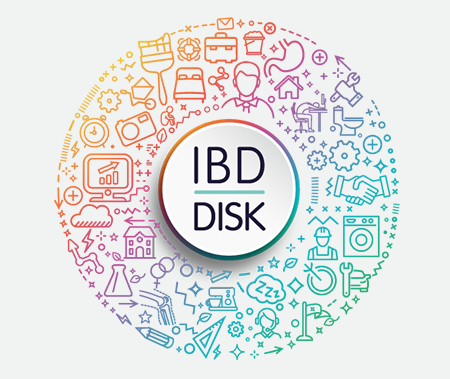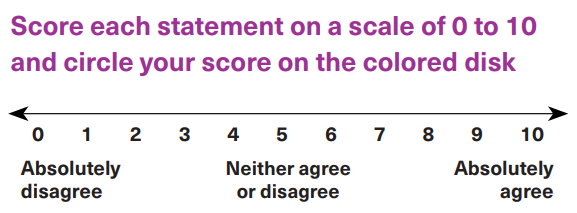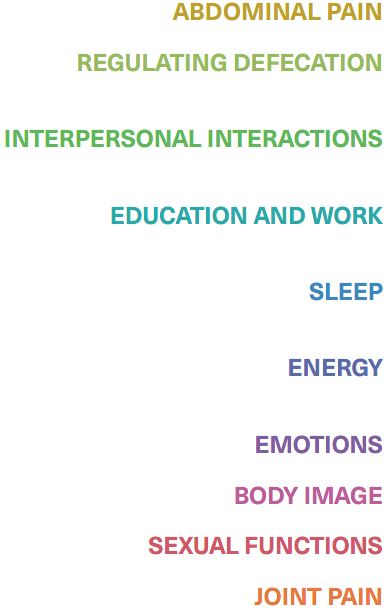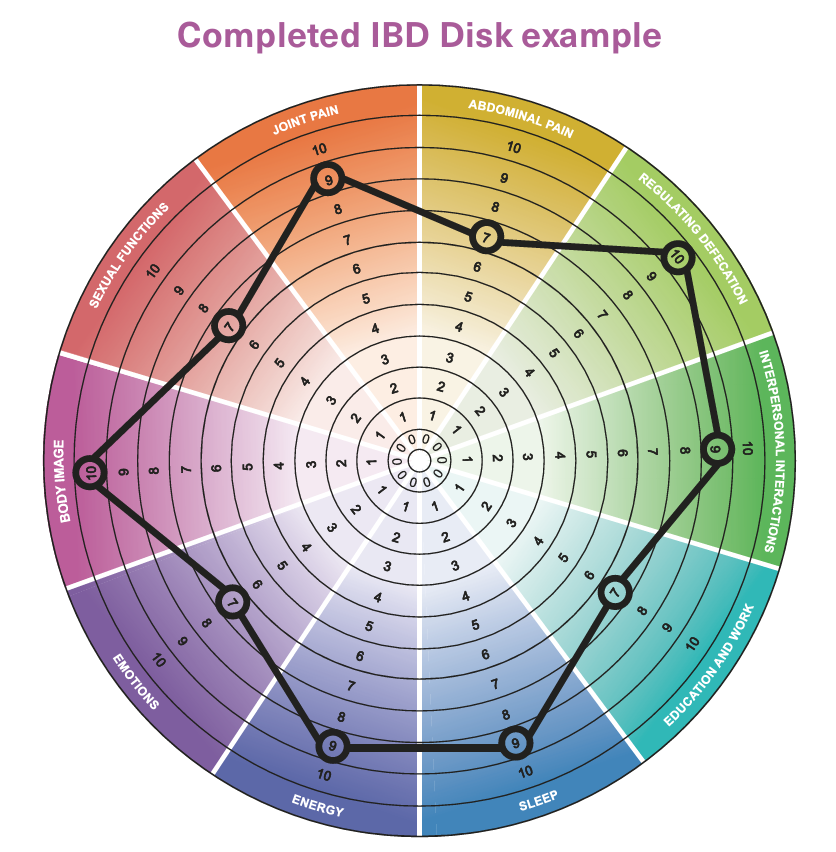IBD Disk
IBD Disk, a tool for assessing the impact of the disease in everyday life1
The IBD Disk is a tool created by a committee of experts, designed for patients with IBD to assess their own state of health.
The IBD Disk is adapted from an internationally validated disability assessment tool: the IBD Disability Index. It is a short and intuitive version, organized around 10 relevant items relating to the patient’s everyday life. By completing it at each visit, patients and doctors have an immediate visual representation of the disability, allowing its progress over time to be monitored. This makes the patient an active participant in his/her care with the doctor and will allow new individualized therapeutic objectives to be defined. The goal is to bring the scores as close as possible to 0 and keep them there, thus allowing a return to normal life.
How do I make my assessment?
• For each of the 10 items, consider what you have felt during the last week and score your level of agreement on a scale from 0 (absolutely disagree) to 10 (absolutely agree). Mark this score on the disc by circling the chosen number in the colour of that item. For example, for the item "I have had pains in the joints of my body": if I have felt very bad during the last week, then I absolutely agree with the statement and I circle the number 10.
• When all the circled numbers are connected together, an immediate visual representation of the disability appears.
• The closer the graph is to the center, the better the state of health.
• By regularly repeating this assessment, it is possible to monitor the progress of the disease.
a. I have had aches or pains in my stomach or abdomen
b. I have had difficulty in coordinating and managing defecation, including choosing and getting to an appropriate place for defecation and cleaning myself afterwards
c. I have had difficulty with personal relationships and/or difficulty participating in the community
d. I have had difficulty with school or studying activities, and/or difficulty with work or household activities
e. I have had difficulty sleeping, such as falling asleep, waking up frequently during the night or waking up too early in the morning
f. I have not felt rested and refreshed during the day, and have felt tired and without energy
g. I have felt sad, low or depressed, and/or worried or anxious
h. I have not liked the way my body or body parts look
i. I have had difficulty with the mental and/or physical aspects of sex
j. I have had pains in the joints of my body
- S. Ghosh et al. Development of the IBD Disk: A Visual Self-administered Tool for Assessing Disability in Inflammatory Bowel Diseases. Inflamm Bowel Dis Volume 23, Number 3, March 2017. www.ibdjournal.org
IBD: Inflammatory bowel disease
AbbVie SA/NV - BE-IMM-240013 (v1.0) - September 2024





